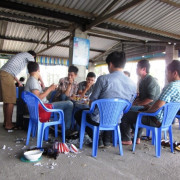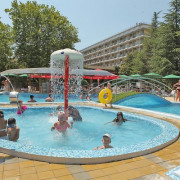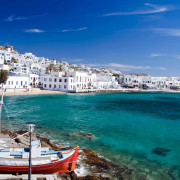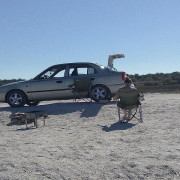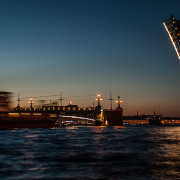Ангола
Содержание:
Population of Angola (2020 and historical)
| Year | Population | Yearly % Change | Yearly Change | Migrants (net) | Median Age | Fertility Rate | Density (P/Km²) | Urban Pop % | Urban Population | Country’s Share of World Pop | World Population | AngolaGlobal Rank |
|---|---|---|---|---|---|---|---|---|---|---|---|---|
| 2020 | 32,866,272 | 3.27 % | 1,040,977 | 6,413 | 16.7 | 5.55 | 26 | 66.7 % | 21,936,953 | 0.42 % | 7,794,798,739 | 44 |
| 2019 | 31,825,295 | 3.30 % | 1,015,508 | 6,413 | 16.4 | 5.91 | 26 | 66.1 % | 21,035,940 | 0.41 % | 7,713,468,100 | 45 |
| 2018 | 30,809,787 | 3.33 % | 993,021 | 6,413 | 16.4 | 5.91 | 25 | 65.4 % | 20,161,538 | 0.40 % | 7,631,091,040 | 45 |
| 2017 | 29,816,766 | 3.38 % | 974,277 | 6,413 | 16.4 | 5.91 | 24 | 64.8 % | 19,311,639 | 0.40 % | 7,547,858,925 | 45 |
| 2016 | 28,842,489 | 3.44 % | 958,108 | 6,413 | 16.4 | 5.91 | 23 | 64.1 % | 18,483,603 | 0.39 % | 7,464,022,049 | 46 |
| 2015 | 27,884,381 | 3.61 % | 905,627 | 33,253 | 16.4 | 6.00 | 22 | 63.4 % | 17,675,745 | 0.38 % | 7,379,797,139 | 46 |
| 2010 | 23,356,246 | 3.75 % | 784,529 | 71,460 | 16.4 | 6.35 | 19 | 59.8 % | 13,970,854 | 0.34 % | 6,956,823,603 | 50 |
| 2005 | 19,433,602 | 3.46 % | 607,626 | 52,220 | 16.4 | 6.55 | 16 | 56.3 % | 10,949,424 | 0.30 % | 6,541,907,027 | 55 |
| 2000 | 16,395,473 | 3.29 % | 490,053 | 39,960 | 16.3 | 6.75 | 13 | 50.2 % | 8,234,824 | 0.27 % | 6,143,493,823 | 57 |
| 1995 | 13,945,206 | 3.31 % | 419,364 | 28,562 | 16.1 | 7.10 | 11 | 45.2 % | 6,302,478 | 0.24 % | 5,744,212,979 | 60 |
| 1990 | 11,848,386 | 3.53 % | 377,278 | 37,698 | 16.1 | 7.40 | 10 | 38.2 % | 4,520,997 | 0.22 % | 5,327,231,061 | 59 |
| 1985 | 9,961,997 | 3.62 % | 324,142 | 46,830 | 16.3 | 7.46 | 8 | 32.3 % | 3,218,567 | 0.20 % | 4,870,921,740 | 64 |
| 1980 | 8,341,289 | 3.50 % | 263,458 | 39,960 | 16.8 | 7.46 | 7 | 26.0 % | 2,169,810 | 0.19 % | 4,458,003,514 | 69 |
| 1975 | 7,024,000 | 3.58 % | 226,727 | 39,960 | 16.9 | 7.50 | 6 | 20.9 % | 1,469,515 | 0.17 % | 4,079,480,606 | 72 |
| 1970 | 5,890,365 | 0.41 % | 23,959 | -117,457 | 17.6 | 7.30 | 5 | 17.2 % | 1,013,531 | 0.16 % | 3,700,437,046 | 75 |
| 1965 | 5,770,570 | 1.13 % | 63,127 | -59,343 | 18.4 | 6.90 | 5 | 13.4 % | 775,667 | 0.17 % | 3,339,583,597 | 68 |
| 1960 | 5,454,933 | 1.58 % | 82,337 | -34,577 | 20.2 | 6.50 | 4 | 10.8 % | 588,842 | 0.18 % | 3,034,949,748 | 68 |
| 1955 | 5,043,247 | 2.09 % | 99,045 | 19.6 | 6.00 | 4 | 9.0 % | 455,428 | 0.18 % | 2,773,019,936 | 68 |
Source: Worldometer (www.Worldometers.info) Elaboration of data by United Nations, Department of Economic and Social Affairs, Population Division. World Population Prospects: The 2019 Revision. (Medium-fertility variant).
Main Cities by Population in Angola
(includes boroughs, districts, urban agglomerations, etc.)
| # | CITY NAME | POPULATION |
|---|---|---|
| 1 | Luanda | 2,776,168 |
| 2 | N’dalatando | 383,100 |
| 3 | Huambo | 226,145 |
| 4 | Lobito | 207,932 |
| 5 | Benguela | 151,226 |
| 6 | Cuito | 113,624 |
| 7 | Lubango | 102,541 |
| 8 | Malanje | 87,046 |
| 9 | Namibe | 80,149 |
| 10 | Soio | 67,491 |
| 11 | Cabinda | 66,020 |
| 12 | Uige | 60,008 |
| 13 | Saurimo | 40,498 |
| 14 | Sumbe | 33,277 |
| 15 | Menongue | 32,203 |
| 16 | Caxito | 28,224 |
| 17 | Longonjo | 24,346 |
| 18 | Mbanza Congo | 24,220 |
| 19 | Caala | 21,205 |
| 20 | Luena | 21,115 |
| 21 | Lucapa | 20,115 |
| 22 | Camacupa | 19,150 |
| 23 | Catabola | 18,855 |
| 24 | Luau | 18,465 |
| 25 | N’zeto | 18,352 |
| 26 | Catumbela | 16,977 |
See also
- Demographics of Angola
- (Historical Chart)
- (Historical Chart)
- (Historical Chart)
- Gross Domestic Product (GDP) of Angola
- Africa Population
- World Population
- World Map
- World Population by Country
Notes
The Angola Population (Live) counter shows a continuously updated estimate of the current population of Angola delivered by Worldometer’s RTS algorithm, which processes data collected from the United Nations Population Division.
The Population of Angola (1950 — 2019) chart plots the total population count as of July 1 of each year, from 1950 to 2019.
The Yearly Population Growth Rate chart plots the annual percentage changes in population registered on July 1 of each year, from 1951 to 2019. This value can differ from the Yearly % Change shown in the historical table, which shows the last year equivalent percentage change assuming homogeneous change in the preceding five year period.
Definitions
Year: as of July 1 of the year indicated.
Population: Overall total population (both sexes and all ages) in the country as of July 1 of the year indicated, as estimated by the United Nations, Department of Economic and Social Affairs, Population Division. World Population Prospects: The 2019 Revision. For forecasted years, the U.N. medium-fertility variant is used.
Read More Definitions…
Yearly % Change: For 2019: percentage change in total population over the last year (from July 1, 2018 to June 30 2019). For all other years: latest year annual percentage change equivalent assuming homogeneous change in the preceding five year period, calculated through reverse compounding.
Yearly Change: For 2019: absolute change in total population (increase or decrease in number of people) over the last year (from July 1, 2018 to June 30 2019). For all other years: average annual numerical change over the preceding five year period.
Migrants (net): The average annual number of immigrants minus the number of emigrants over the preceding five year period (running from July 1 to June 30 of the initial and final years), or subsequent five year period (for 2016 data). A negative number means that there are more emigrants than immigrants.
Median Age: age that divides the population into two numerically equal groups: half of the people are older than the median age indicated and half are younger. This parameter provides an indication of age distribution.
Fertility Rate: (Total Fertility Rate, or TFR), it is expressed as children per woman. It is calculated as the average number of children an average woman will have during her reproductive period (15 to 49 years old) based on the current fertility rates of every age group in the country, and assuming she is not subject to mortality.
Density (P/Km²): (Population Density) Population per square Kilometer (Km²).
Urban Pop % : Urban population as a percentage of total population.
Urban Population: Population living in areas classified as urban according to the criteria used by each country.
Country’s Share of World Pop: Total population in the country as a percentage of total World Population as of July 1 of the year indicated.
World Population: Total World Population as of July 1 of the year indicated.
Global Rank: Position held by Angola in the list of all countries worldwide ranked by population (from the highest population to the lowest population) as of July 1 of the year indicated.
Возвышенность Сьерра-да-Шела у дороги из Лубанго в Намибе
Официальное название: Республика Ангола, República de Angola (португ.), Republic of Angola (англ.)
Государство на юго-западе Африки. Граничит с Конго (на севере — анклав Кабинда), а также с Демократической Республикой Конго (быв. Заир) на севере и востоке, с Замбией на востоке и с Намибией на юге. На западе Ангола омывается водами Атлантического океана.
[]
Краткая справка
- Столица — г. Луанда (08º 51´ ю.ш., 13º 14´ в.д.)
- Площадь: 1 млн 246,7 тыс. км²
- Население 17 млн 499 тыс. чел. (2008)
- Основные народы принадлежат к языковой семье банту — бамбунду, баконго, овимбунду, киконго, вачокве; также народы овамбо, гереро, бушмены
-
Государственный язык: португальский (де-факто)
- Государственный строй – полупрезидентская республика
- Глава государства – президент, избираемый большинством Национальной ассамблеи на 5-летний срок с возможностью 2-го срока (с 21 сентября 1979 – председатель МПЛА Жозе Эдуарду душ Сантуш, José Eduardo dos Santos)
-
Глава правительства — вице-президент, назначаемый президентом (с 5 февраля 2010 — Фернанду да Пьедади Диаш душ Сантуш, Fernando da Piedade Dias dos Santos, по прозвищу Нандо, Nandó)
-
Парламент – однопалатная Национальная Ассамблея (223 депутата)
- Телефонный код 8-10-244
- Разница во времени с Москвой -3 часа
- Денежная единица: кванза (обозначается Kz, код AOA по стандарту ISO)
Курс покупки валюты Национальным Банком Анголы на 25.06.2012: 1€ = 119,3170 AOA, 1$ = 95,1180 AOA, 1 южноафриканский рэнд = 11,3240 AOA;
Доллар США имеет свободное хождение по стране.
- Доменная зона в Интернете .ao
- Официальный информационный портал: Парламент; Правительство
- Место в рейтинге нестабильности: 52 (из 177 в 2011; в 2010 г. 55-е место из 177; в 2009 г. 55-е место из 177; в 2008 г. 56-е место из 177; в 2007 53-е место из 177; в 2006 37-е место из 146). Относительно нестабильное государство
[]
Праздничные дни
- 1 января Новый Год
- 4 января День Мучеников (годовщина восстания против португальских колонизаторов, 1961)
- подвижная дата в феврале-марте — Карнавал
- 8 марта Международный женский день
- 4 апреля Годовщина подписания перемирия в гражданской войне (2002)
- 1 мая День труда
- 25 мая День Африки
- 1 июня День защиты детей
- 17 сентября День Национальных Героев
- 2 ноября День всех душ
- 11 ноября День национальной независимости (1975)
- 25 декабря Рождество
[]
- (русская версия)
- (на португальском, английском и французском языках)
[]
Избранные материалы «Вокруг света» об Анголе
Статьи
-
Май 1982 Карнавал победы (история Анголы от доколониальных времен до завоевания независимости)
-
Июль 1994 Красная земля королевы Нзинги. Часть I (история Луанды, описание столицы Анголы в 1992 году)
-
Август 1994 Красная земля королевы Нзинги. Часть II (Луанда, Капанда, река Кванза в 1992-1994 гг.)
[]
Angola Population Forecast
-1,000
| Year | Population | Yearly % Change | Yearly Change | Migrants (net) | Median Age | Fertility Rate | Density (P/Km²) | Urban Pop % | Urban Population | Country’s Share of World Pop | World Population | AngolaGlobal Rank |
|---|---|---|---|---|---|---|---|---|---|---|---|---|
| 2020 | 32,866,272 | 3.34 % | 996,378 | 6,413 | 16.7 | 5.55 | 26 | 66.7 % | 21,936,953 | 0.42 % | 7,794,798,739 | 44 |
| 2025 | 38,478,226 | 3.20 % | 1,122,391 | 17.2 | 5.55 | 31 | 69.8 % | 26,847,887 | 0.47 % | 8,184,437,460 | 41 | |
| 2030 | 44,834,712 | 3.11 % | 1,271,297 | -1,000 | 17.9 | 5.55 | 36 | 72.3 % | 32,437,132 | 0.52 % | 8,548,487,400 | 37 |
| 2035 | 51,952,545 | 2.99 % | 1,423,567 | -1,000 | 18.6 | 5.55 | 42 | 74.5 % | 38,691,449 | 0.58 % | 8,887,524,213 | 35 |
| 2040 | 59,782,170 | 2.85 % | 1,565,925 | -999 | 19.2 | 5.55 | 48 | 76.2 % | 45,556,399 | 0.65 % | 9,198,847,240 | 30 |
| 2045 | 68,297,800 | 2.70 % | 1,703,126 | -1,000 | 19.9 | 5.55 | 55 | 77.7 % | 53,037,025 | 0.72 % | 9,481,803,274 | 28 |
| 2050 | 77,420,346 | 2.54 % | 1,824,509 | 20.7 | 5.55 | 62 | 79.0 % | 61,131,579 | 0.80 % | 9,735,033,990 | 24 |
Source: Worldometer (www.Worldometers.info) Elaboration of data by United Nations, Department of Economic and Social Affairs, Population Division. World Population Prospects: The 2019 Revision. (Medium-fertility variant).
Angola Demographics
Main Page: Demographics of Angola
Life Expectancy
62.22 years(life expectancy at birth, both sexes)
Infant Mortality
53.4(infant deaths per 1,000 live births)
Deaths under age 5
70.3 (per 1,000 live births)
